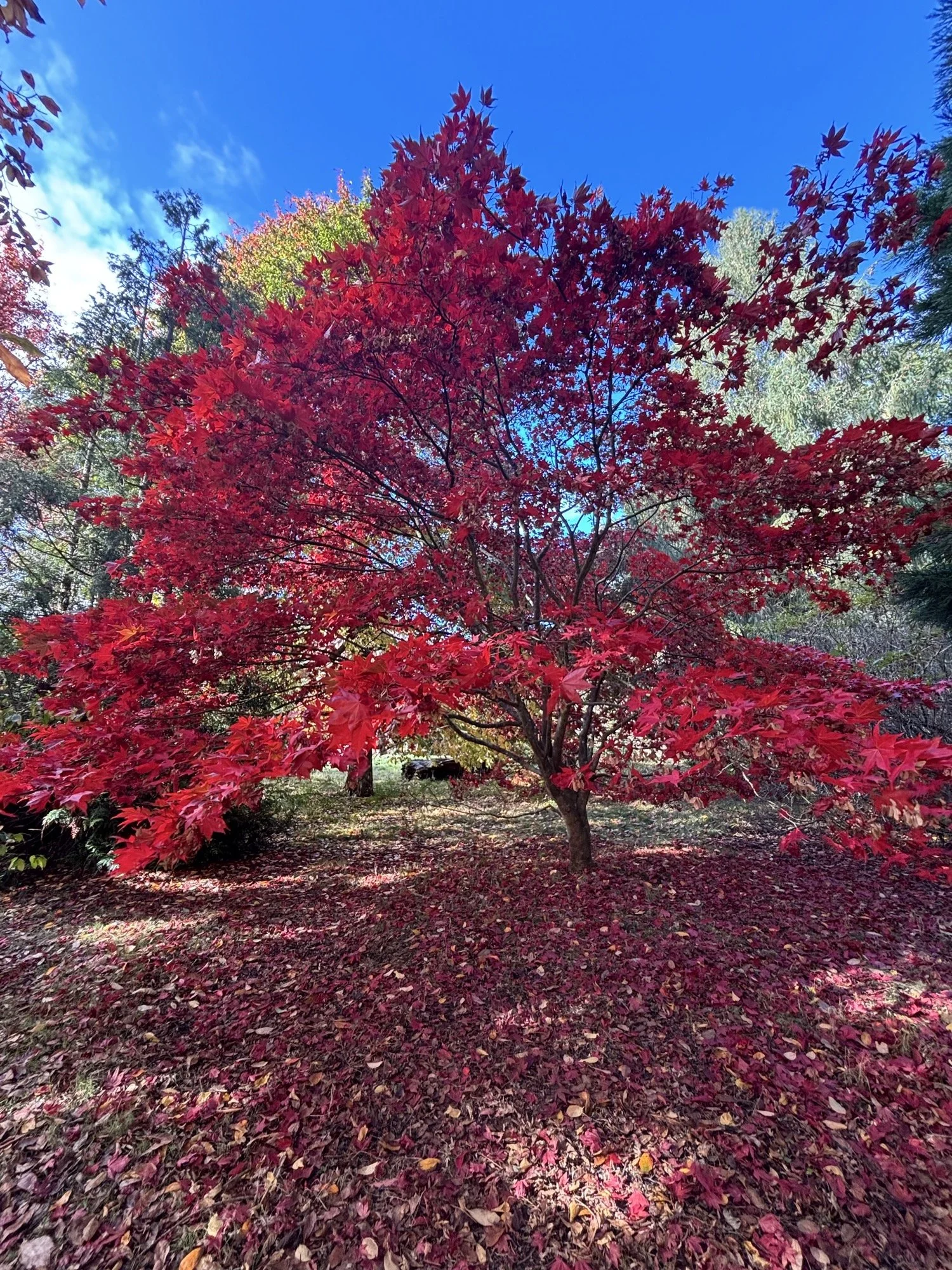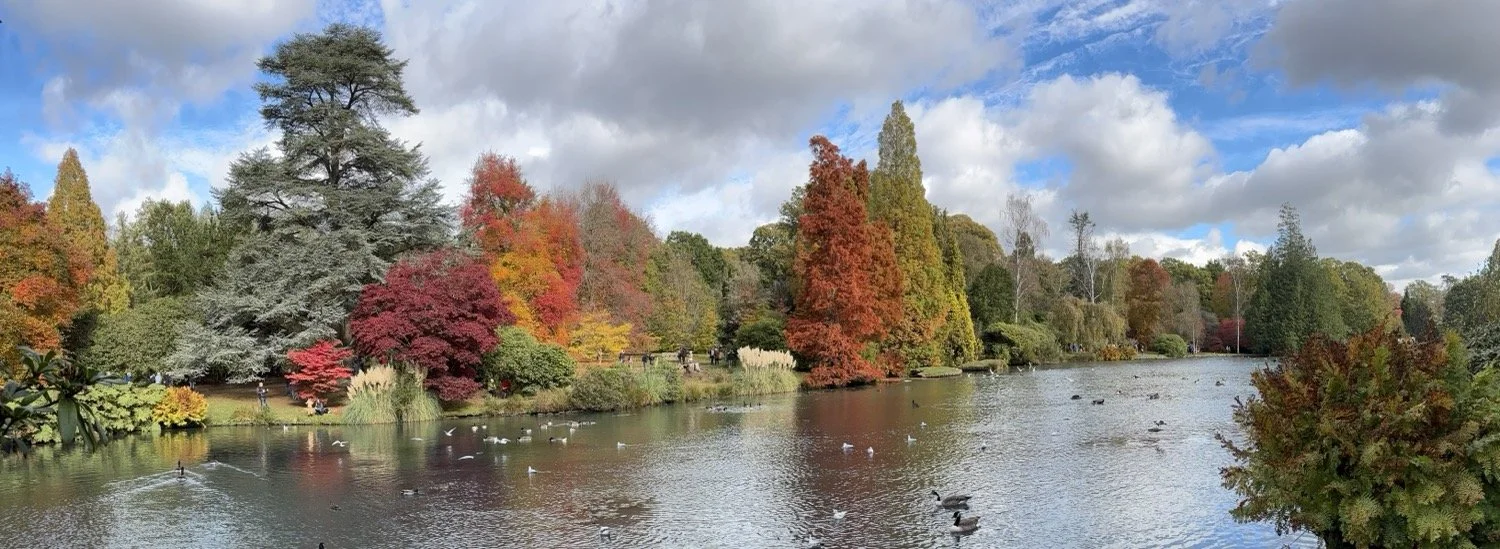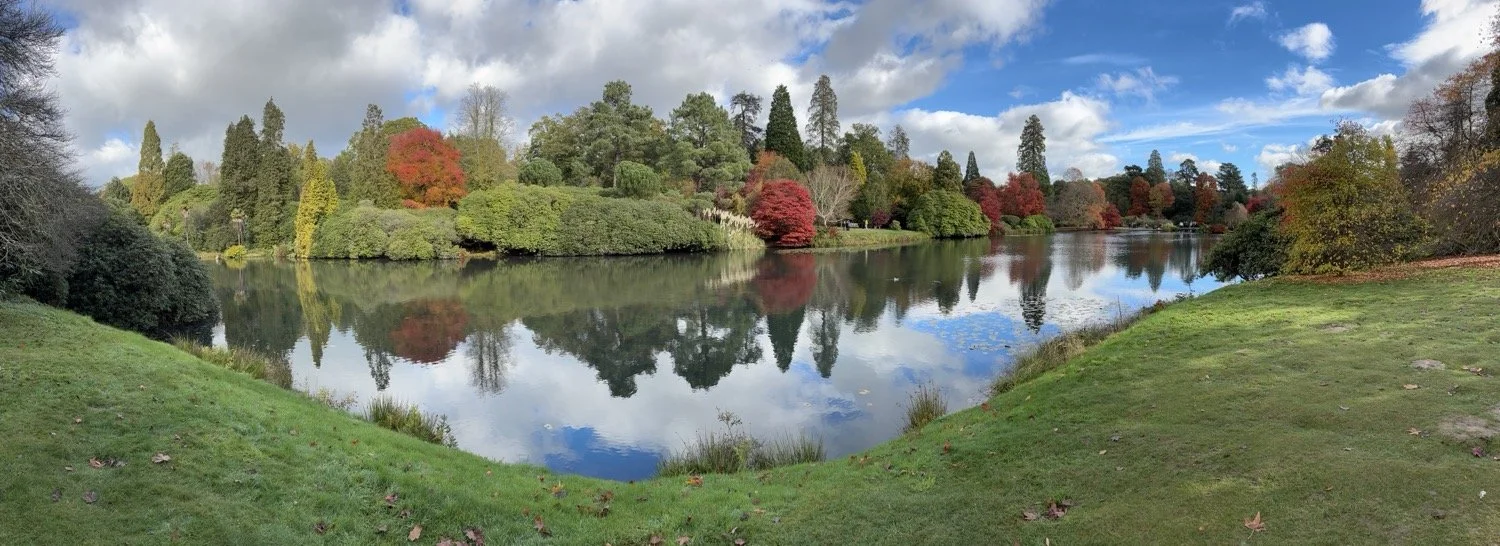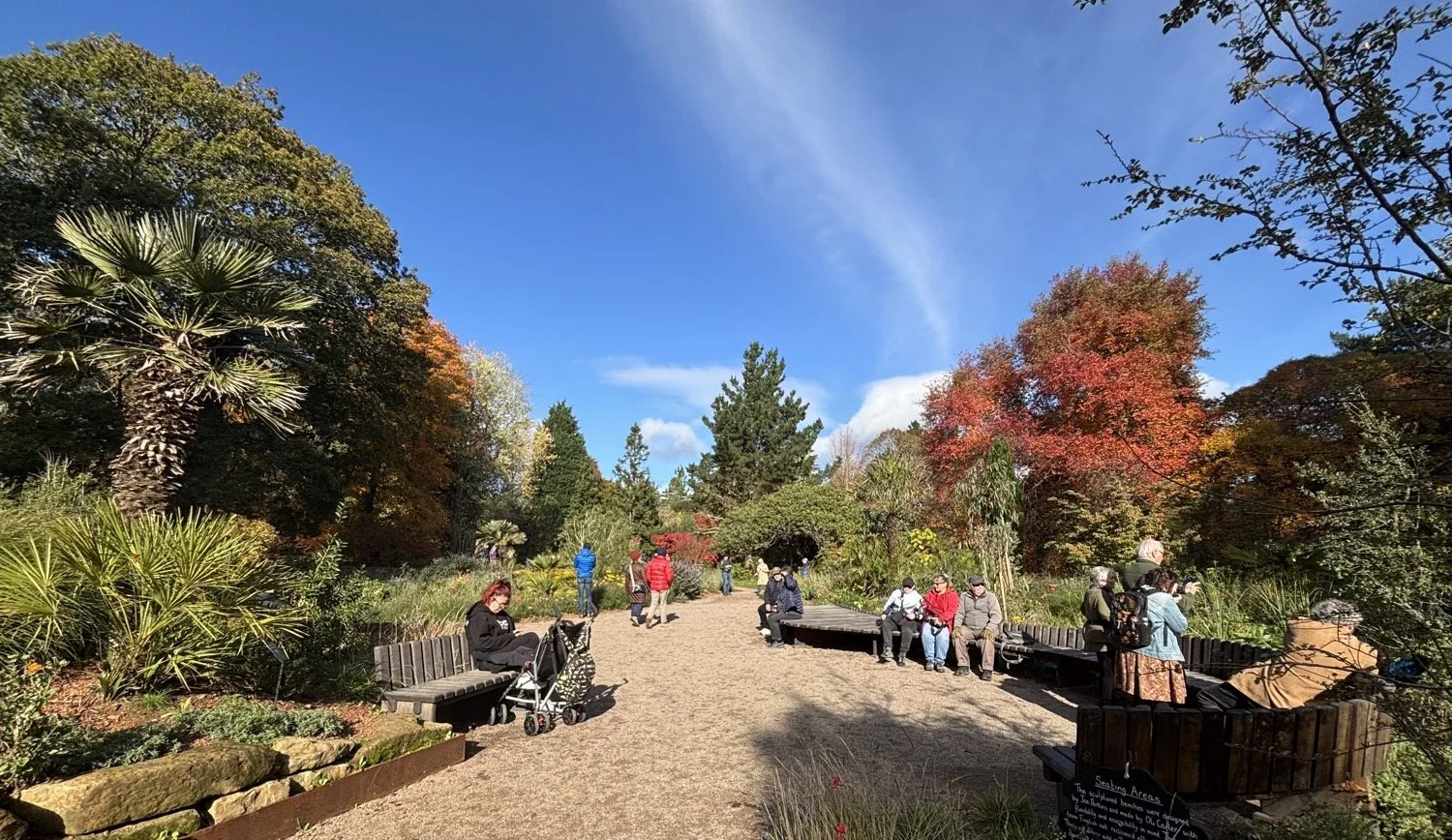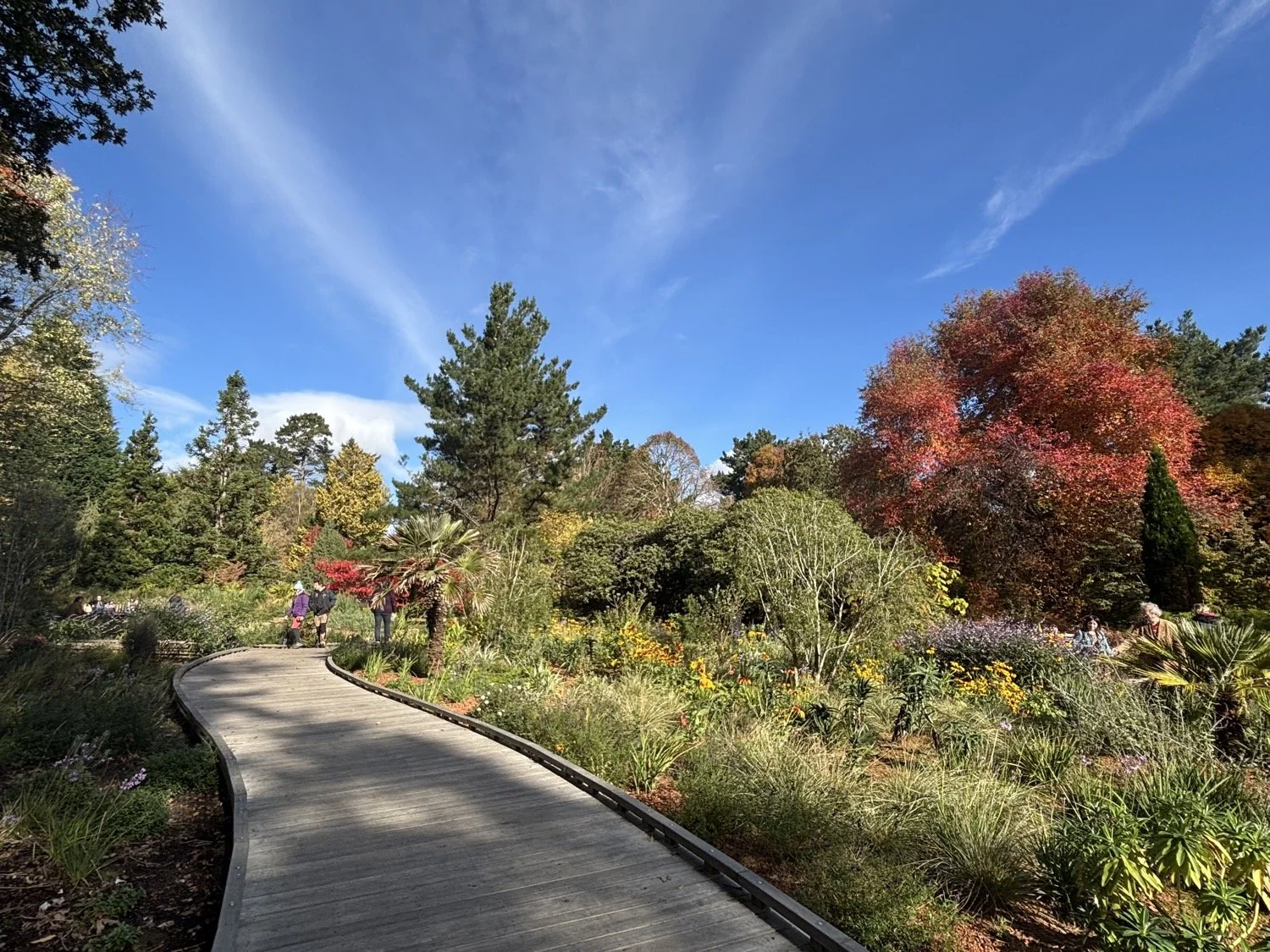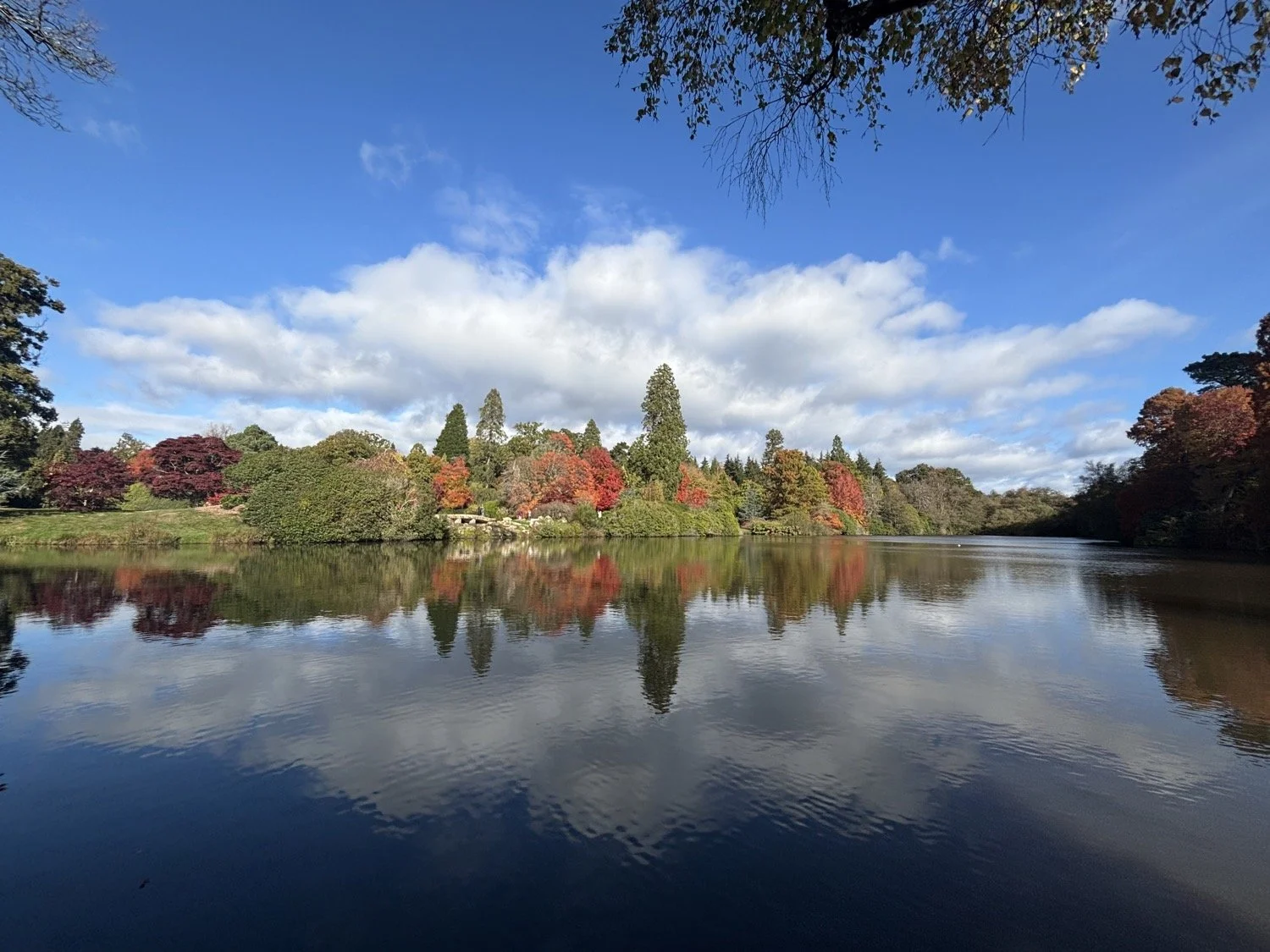Sheffield Park in Autumn
A blue sky, fiery autumn colours, thick piles of leaves crunching underfoot – what more could you want from a day?
Back in January, I’d visited Sheffield Park and been struck by how enjoyable it was even in winter. The design made it a joy to walk round: the structure of the garden was evident in the bare trees and the vistas from certain points. Stripped back to its bones, the garden felt light and airy. There was time to focus on the bark of individual trees and to notice small details. But with all these trees, I couldn’t help wondering how it would look at other times of the year. And so, given a chance to revisit at the end of October, I couldn’t wait to discover what additional delights the garden might have in store for me.
It seems I wasn’t the only one in search of autumn colour: the first Sunday of half term and the car park had overflown into the field. It was lovely to see so many children enjoying time in nature, collecting leaves and spotting fungi. Overheard snippets of conversation revealed frazzled parents who must surely have left lighter in spirit – buoyed by the sheer beauty around them and by seeing their little ones engaged, busy, and happy.
The joy of Sheffield Park is no accident: it is the result of careful orchestration by a succession of inspired garden designers. From Norman estate and Tudor deer park it evolved into an aristocratic landscape park. John Baker Holroyd was the son of a lawyer who was made Earl of Sheffield in 1816. Very much a ‘new man’ rather than landed aristocracy, he bought the property and had a new ‘Gothick’-style mansion built. This was the period when everyone who was anyone had to have their gardens remodelled by Lancelot ‘Capability’ Brown and Humphry Repton – the two most celebrated landscape designers of their time.
Brown’s signature style involved sweeping away the ornate gardens of the 17th century and creating a landscape which looked like ‘improved nature’. Working here in the late 18th century, he is thought to have designed Ten Foot Pond and laid out some of the walks, creating important vistas in the process. His tenure was brief but influential, and his successor, Humphry Repton, continued the transformation. Repton re-landscaped some of the ponds, opening up views, and added thousands of trees.
A hundred years later, Arthur Gilstrap Soames bought the estate. His family had made a fortune in the brewing industry, and Arthur had spent time travelling in Sri Lanka. Here he discovered plants which he brought back to Sussex, giving an exotic feel to the garden. Soames also knew important American botanists who advised him in the introduction of North American species such as Swamp Cypress and Nyssa. It was largely this early 20th-century planting that now provides the spectacular autumn colour I came to see. The joy of it though is that the trees look at their best when either reflected in or seen across the large bodies of water which shimmered in the autumnal sunshine.
Fast forward again to 2025 and there have been more changes. Garden for the Future opened early this year, the first major project since the National Trust took over the care of the garden in 1954.
Designed by Joe Perkins, who has three gold medals at Chelsea under his belt, it looks to the future and what will survive and thrive as the climate changes. It builds on the fact that the garden here has changed at significant times with new species and ideas being introduced. Now is the time to plant with future climate in mind and also to produce a garden which is accessible for all and provides seating for more than three people in one place (as with the standard benches dotted around the garden).
To be honest, I wasn’t expecting much from such a new garden, but I was blown away. Perhaps that’s the magic of calling in someone used to designing for Chelsea – it almost comes ‘ready-made’. It felt contemporary yet in harmony with the rest of the landscape. It is a beautiful space which felt well-designed for walking around – or wheeling. Wide paths between borders and a beautiful winding oak boardwalk meant that it was very accessible for those using wheels. Some of the planting areas are raised, making them easy to look at and to enjoy the scents. A couple of large open areas acted as punctuation points with seating – again beautifully designed from natural materials and just inviting you to sit down and soak up the space.
A testament to its success, I suppose, was the large number of people who had congregated here. It wasn’t easy to find, is off the main path with no sign to it. Plus they had run out of maps, so I’m surprised anyone found their way to it. On a less busy day this would be a calm and peaceful place where you could really feel enveloped by plants.
There was still plenty of colour in the borders and the hoverflies and bees were loving the salvias. So good to have flowers for pollinators at this time of year. I left this new garden somewhat reluctantly but there was still so much to see….
As I wandered from viewpoint to viewpoint I was always aware of other people around me and it was hard not to notice how they responded to the garden. What I found interesting is that whilst almost everyone stopped to take photos at the key viewpoints, I heard very few people actually talking about what they were seeing. Mostly they were just chatting about mundane things. Which got me thinking about the place of ‘gardens to visit’ in people’s lives.
The National Trust said about the Garden for the Future that they “want to demonstrate how plants and green spaces can improve people’s quality of life.” I’d recently heard Dr Roger Seheult on the Feel Better, Live More podcast explaining that trees reflect infrared light – a wavelength essential for our wellbeing – and that just twenty minutes among trees can improve our health.
It made me realise that all these people (adults and children) were getting far more out of their trip to Sheffield Park than they probably realised. Perhaps it doesn’t matter whether people stop to think about the trees. They’re quietly at work on us all the same. Still, I’ll always advocate pausing to sit, watch, and listen – because that’s when the real conversation with a garden begins.
All photographs taken at Sheffield Park, Sussex. Historical notes summarised from the National Trust website: https://www.nationaltrust.org.uk/visit/sussex/sheffield-park-and-garden
